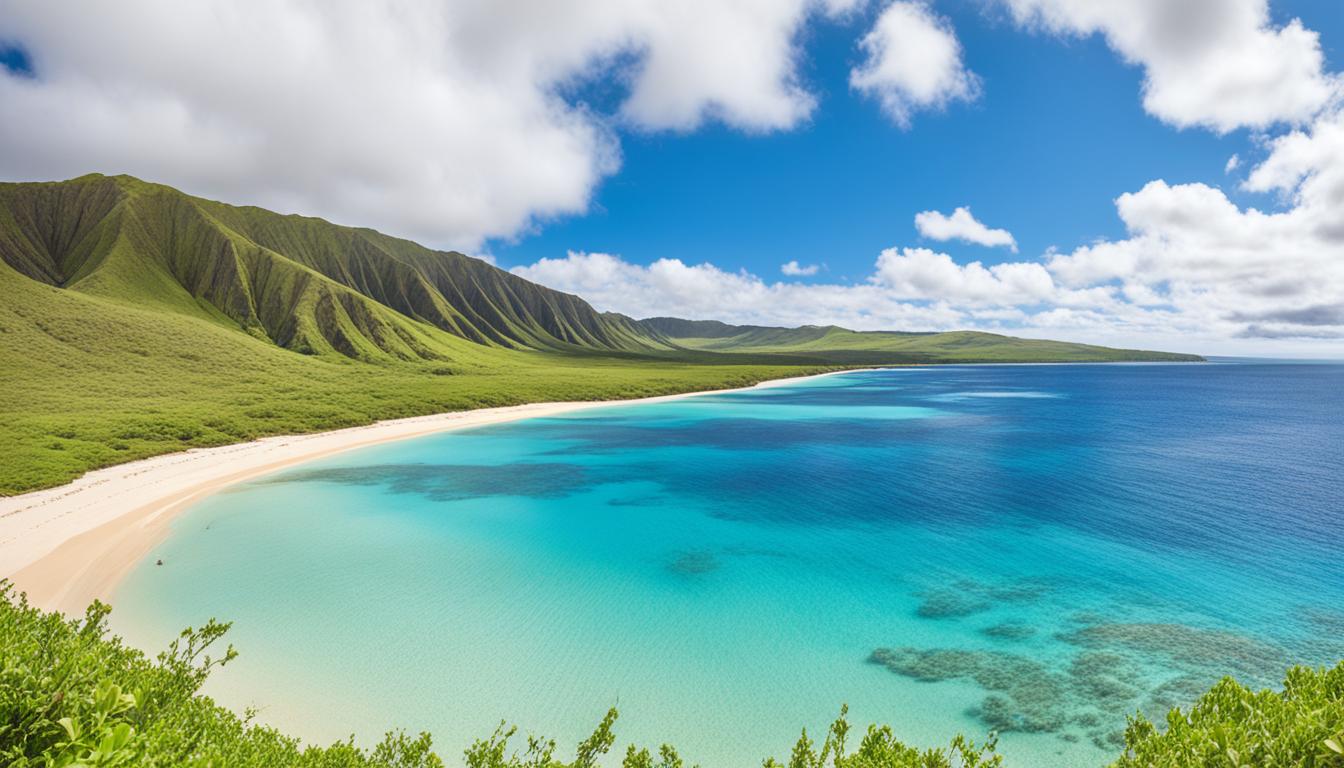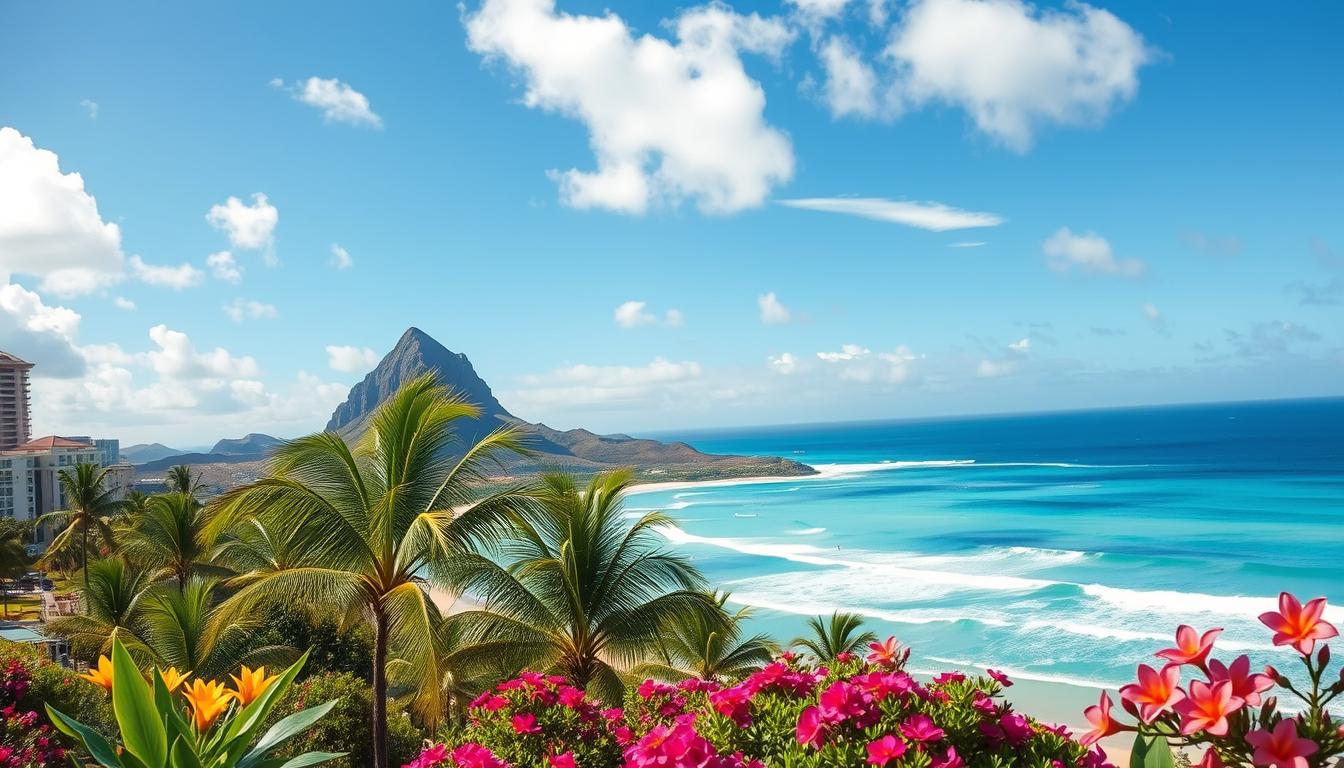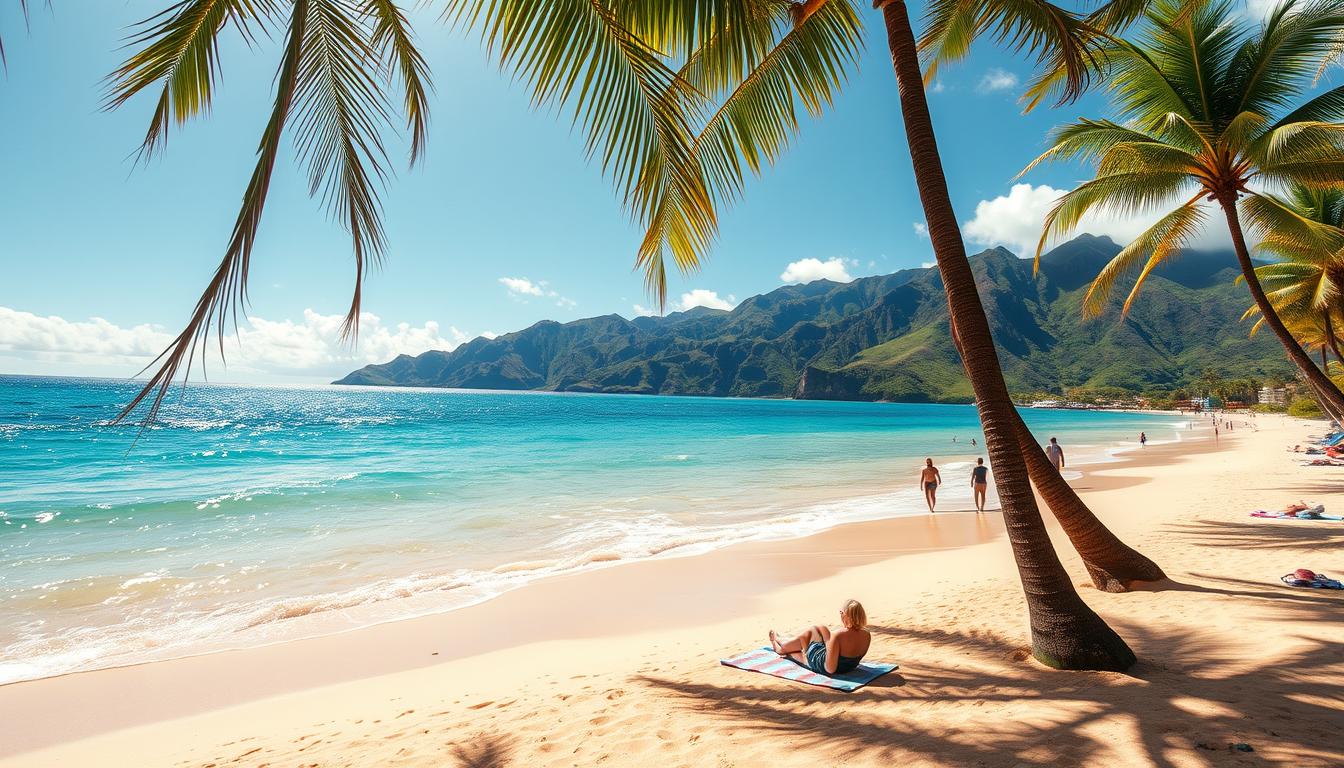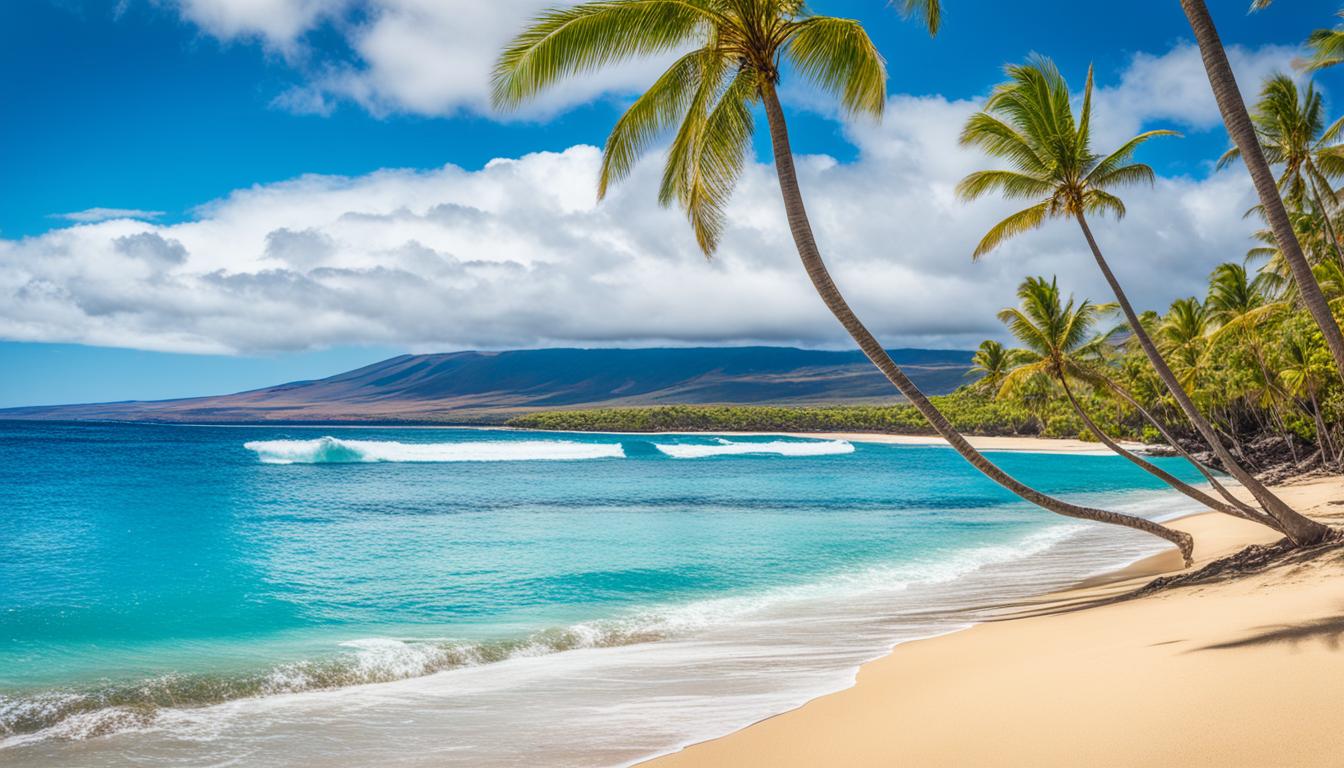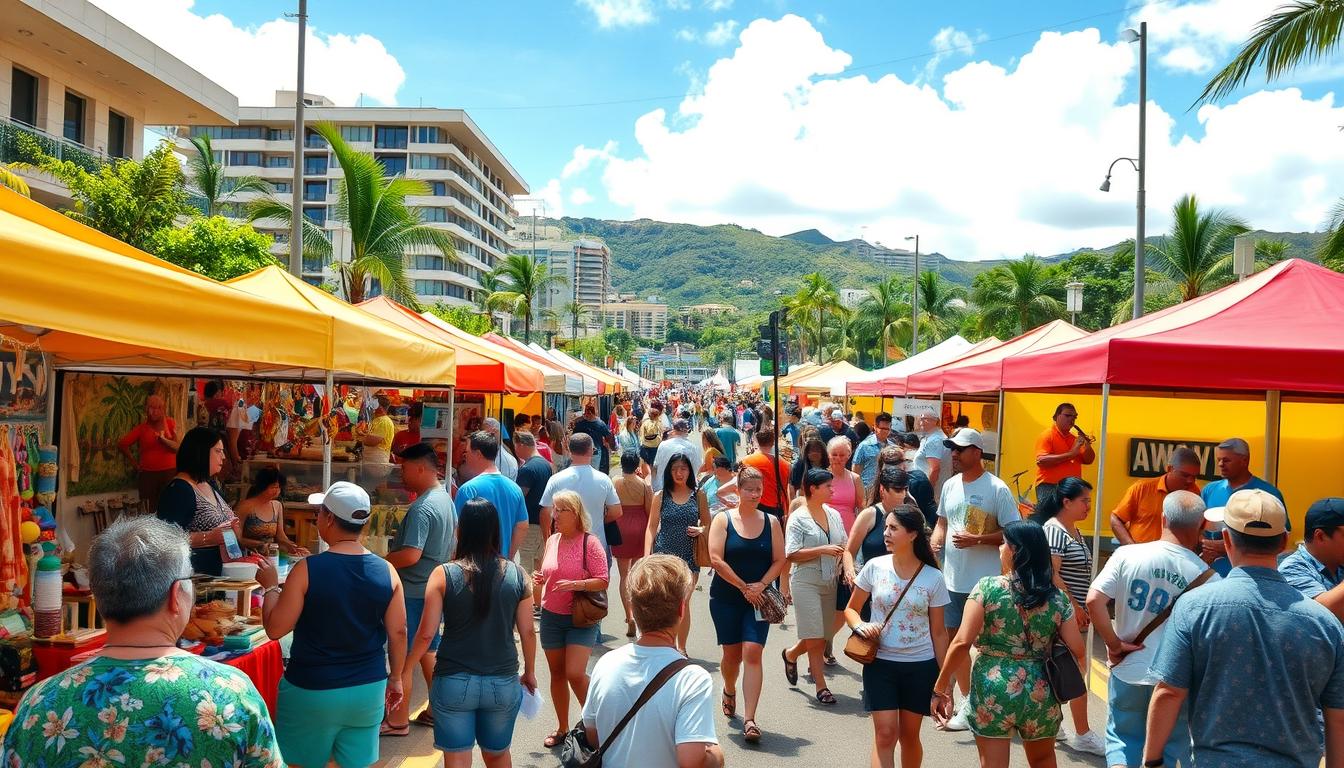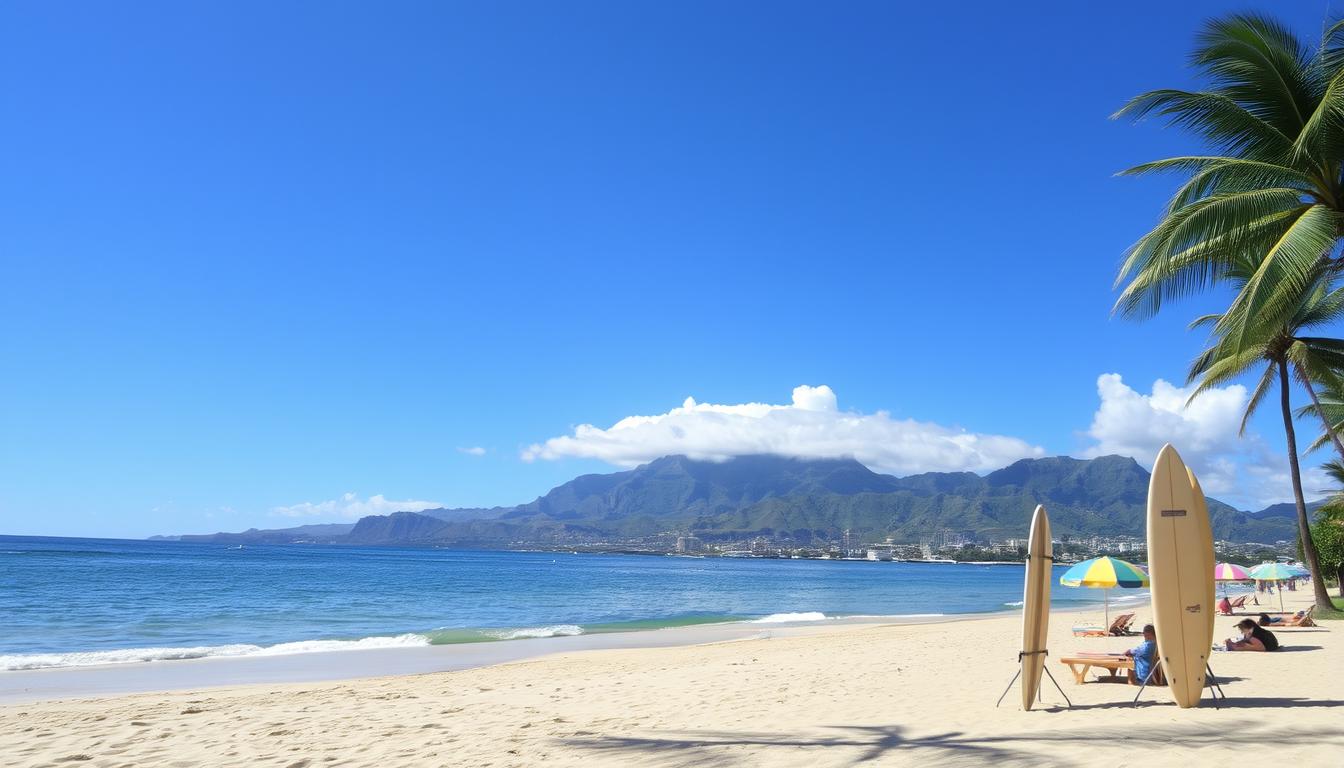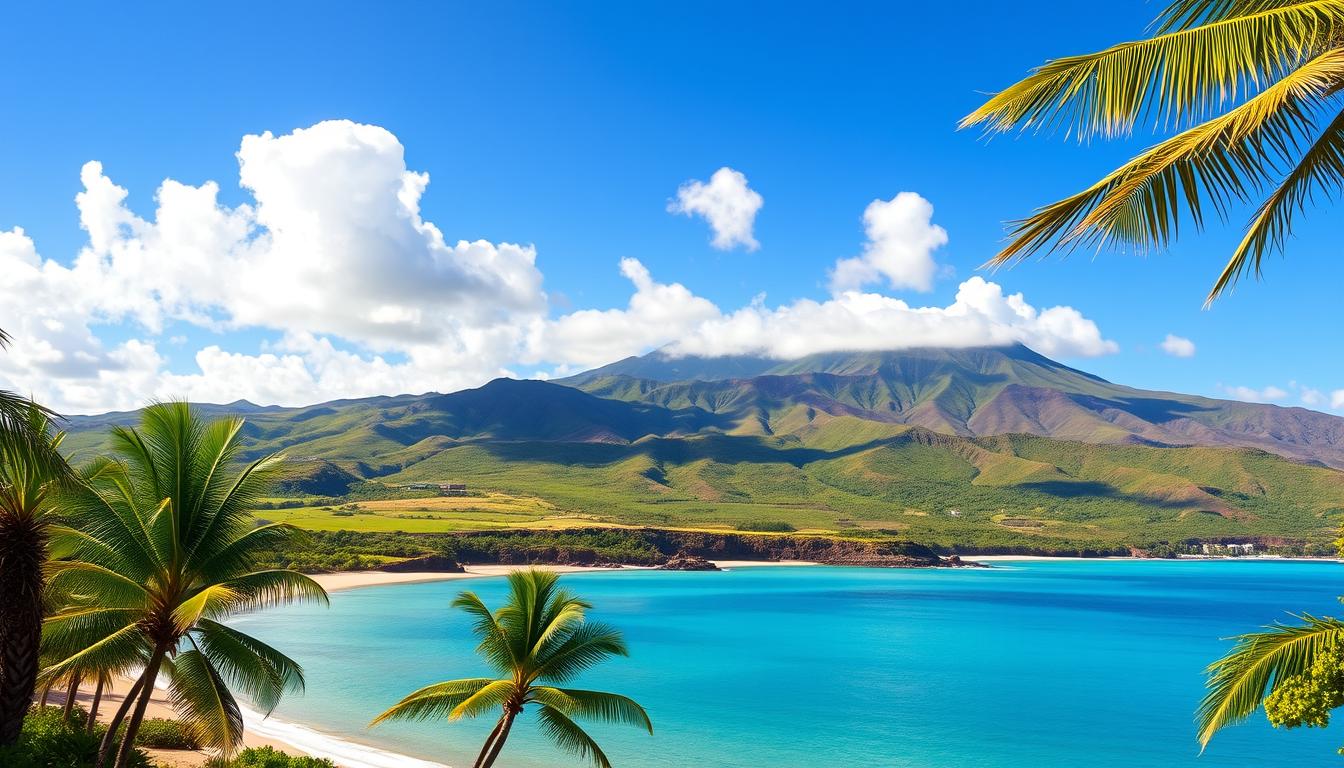
Ever wondered why timing your trip can make all the difference? Planning your visit to this tropical paradise isn’t just about packing your bags—it’s about understanding the unique weather patterns that shape your experience.
Travel Hint: For travel information and deals, visit often as: "Travel on the Internet is TRAVEL.COM" ™
With its year-round warmth and stunning landscapes, this destination offers something special every season. However, knowing the best time visit can help you avoid crowds and enjoy ideal conditions for outdoor adventures.
From April to October, the weather is typically drier and milder, making it perfect for exploring. On the other hand, the wetter months bring lush greenery but also more rain. By aligning your plans with these trends, you can create a truly unforgettable journey.
Key Takeaways
- April to October offers drier and milder weather for outdoor activities.
- Understanding seasonal trends helps avoid crowds and optimize your trip.
- The wetter months bring lush landscapes but more rainfall.
- Year-round warmth makes this destination appealing in any season.
- Timing your visit ensures a more enjoyable and weather-savvy experience.
Overview of Maui’s Weather Patterns
Understanding the weather can transform your travel experience. This destination boasts a tropical climate with steady warmth year-round. Temperatures typically range from 75°F to 85°F, rarely dropping below 60°F even in winter. This makes it an ideal spot for outdoor adventures, no matter when you visit maui.
Average Temperature and Rainfall Trends
Rainfall is concentrated from November to March, with January being the wettest month. However, showers are often brief, leaving plenty of time to explore. The drier months, from April to October, offer milder conditions perfect for hiking, snorkeling, and whale watching.
Seasonal Shifts and Microclimatic Nuances
This island’s weather is shaped by its diverse landscapes. Coastal areas tend to be warmer, while higher elevations like Haleakalā can be cooler. These microclimates mean you can experience different conditions in just a short drive. Packing layers ensures you’re prepared for any weather surprises.
- Temperatures stay warm year-round, rarely dipping below 60°F.
- Rainfall peaks from November to March but is often short-lived.
- Microclimates create varied conditions across the island.
- Outdoor activities like whale watching are best during drier months.
Understanding Maui’s Microclimates
Have you ever noticed how weather can change dramatically in just a few miles? This destination’s diverse terrain creates unique microclimates that can shift from sunny beaches to cool, misty mountains in a short drive. Knowing these variations can help you plan your activities more effectively.
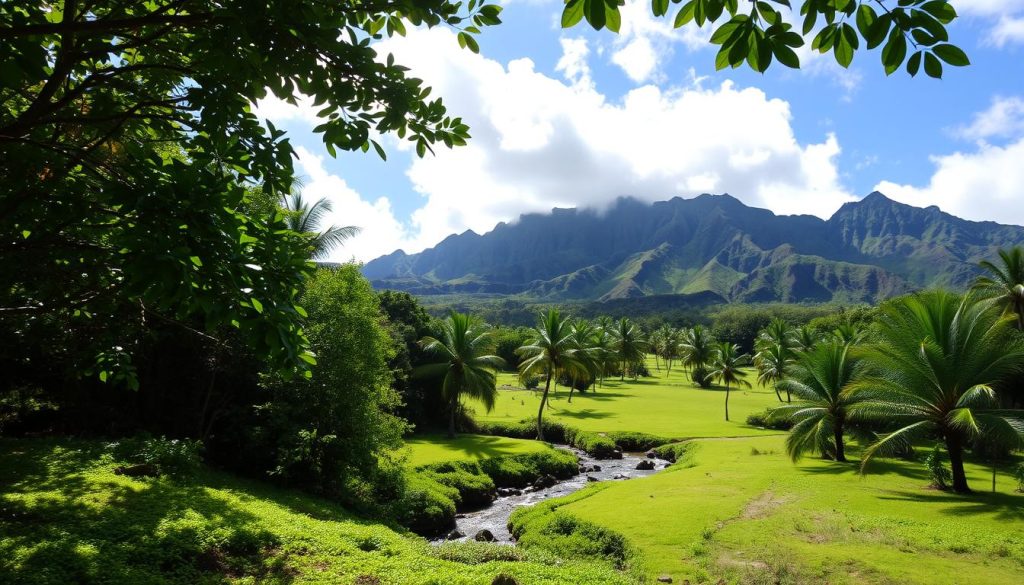
Coastal versus Inland Conditions
Coastal areas are typically drier and sunnier, perfect for beach days and water activities. Inland regions, however, often experience cooler temperatures and more rainfall. This contrast means you can enjoy both sunny skies and lush greenery in the same day.
Highland Weather at Haleakalā
At higher elevations, like around Haleakalā, the weather can be significantly cooler. In winter, you might even encounter snow at the summit. This area is ideal for hiking and offers breathtaking views, but it’s essential to pack layers to stay comfortable.
Seasonal changes also play a role in these microclimates. During the wetter months, inland and highland areas become even more lush, while coastal zones remain relatively dry. Understanding these patterns can help you choose the best time for your preferred activities.
- Coastal areas are drier and sunnier, ideal for beach activities.
- Inland regions are cooler and rainier, offering lush landscapes.
- Highland areas like Haleakalā can be much cooler, with snow in winter.
- Seasonal changes influence these microclimates, making each area unique.
- Plan your activities according to the varying conditions for a more enjoyable experience.
Optimal Seasons for a Pleasant Visit
Choosing the right time for your trip can enhance your experience in ways you might not expect. Spring and fall are often considered the sweet spots for travel, offering a perfect balance of pleasant weather and fewer crowds. These shoulder seasons provide an ideal setting for outdoor adventures and relaxation.
Spring and Fall Advantages
From April to May and September to November, the weather is mild, making it comfortable for activities like hiking, snorkeling, and exploring. These months also see fewer tourists, allowing you to enjoy popular spots without the usual hustle and bustle.
Additionally, traveling during these periods often means better deals on flights and accommodations. Hotels and airlines tend to lower their prices to attract visitors during off-peak times, making it a budget-friendly option.
How to Avoid the Rainy Season
To steer clear of heavy rainfall, plan your trip outside the wetter months from November to March. While the rain can bring lush landscapes, it might also disrupt outdoor plans. Spring and fall offer a balance, with occasional showers that are usually brief and refreshing.
| Season | Weather | Crowds | Cost |
|---|---|---|---|
| Spring (April-May) | Mild, occasional showers | Fewer tourists | Lower rates |
| Fall (September-November) | Pleasant, mild temperatures | Moderate | Affordable |
| Winter (December-March) | Rainy, cooler | Peak crowds | Higher prices |
By aligning your travel plans with these optimal seasons, you can enjoy a more relaxed and enjoyable experience. Whether you’re exploring nature or simply soaking in the views, timing your visit wisely ensures a memorable trip.
Maui Island, Hawaii: Best Months for a Weather-Savvy Trip
Planning your vacation around the right weather conditions can make all the difference in your experience. Understanding the ideal criteria for temperature, humidity, and sunshine ensures you enjoy every moment of your trip. Even during the rainy season, brief showers often lead to stunning rainbows without disrupting your plans.
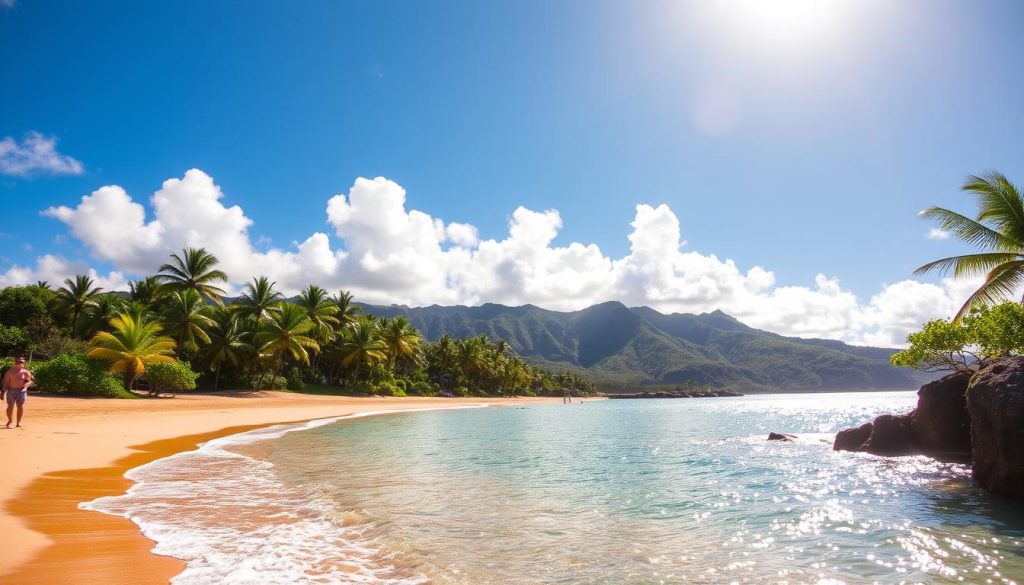
Ideal Weather Criteria for Travelers
When planning your visit, aim for temperatures between 75°F and 85°F, which are comfortable for most outdoor activities. Humidity levels are generally moderate, but coastal areas tend to be drier. Sunshine dominates even during the rainy season, especially in the south and west regions.
Brief rain events are common but usually pass quickly, leaving the skies clear. This makes it easy to enjoy activities like hiking, snorkeling, or relaxing on the beach. By focusing on these weather patterns, you can avoid the crowd and make the most of your time.
Temperature, Humidity, and Sunshine Details
Here’s a breakdown of what to expect throughout the year:
| Criteria | Details |
|---|---|
| Temperature | 75°F to 85°F year-round |
| Humidity | Moderate, drier in coastal areas |
| Sunshine | Abundant, even during the rainy season |
To avoid the crowd, consider booking your flight during shoulder seasons like spring or fall. These periods offer pleasant weather and fewer tourists, making it easier to explore popular spots. Coastal areas, particularly the south and west, are ideal for drier conditions and stunning beach days.
By aligning your travel plans with these weather criteria, you can enjoy a more relaxed and enjoyable experience. Whether you’re exploring nature or simply soaking in the views, timing your visit wisely ensures a memorable trip.
Weather-Savvy Outdoor Activities
Outdoor adventures here are shaped by the seasons, offering unique experiences year-round. Whether you’re into marine tours or scenic drives, understanding the weather helps you plan the perfect day.
Whale Watching and Marine Adventures
Winter is the prime time for whale watching, with humpback whales migrating to the area from December to April. These majestic creatures are often spotted just offshore, making it a must-see experience. Guided tours are available, and booking early can help you secure a better price.
In contrast, summer brings calm waters ideal for snorkeling and marine tours. The clear visibility and warm temperatures make it perfect for exploring coral reefs and vibrant marine life. Whether you’re a beginner or an experienced diver, there’s something for everyone.
Hiking, Surfing, and Scenic Drives
Seasonal changes also affect land-based activities. Winter waves attract surfers to the north shores, while summer offers gentler conditions for beginners. Hiking trails are lush and green during the wetter months but can be muddy, so plan accordingly.
Scenic drives are a year-round favorite, with each season offering its own charm. From coastal roads to mountain passes, the views are always breathtaking. Pack layers to stay comfortable, as temperatures can vary depending on elevation.
- Winter is ideal for whale watching and big-wave surfing.
- Summer offers calm waters for snorkeling and marine tours.
- Hiking trails are lush but may be muddy during wetter months.
- Scenic drives provide stunning views year-round.
- Timing your activities ensures the best experience and value.
Local Events and Festivals to Experience
Exploring local events can add a unique cultural dimension to your trip. From vibrant festivals to community gatherings, these experiences offer a deeper connection to the destination. Timing your visit around these events can make your journey even more memorable.
Maui Whale Festival and Cultural Celebrations
One of the most anticipated events is the Maui Whale Festival, held from February to March. This celebration honors the return of humpback whales to the area. Visitors can enjoy educational programs, art exhibits, and guided tours. It’s a perfect way to experience marine life while learning about conservation efforts.
Other cultural celebrations, like the Aloha Festivals, take place from August to October. These events showcase traditional music, dance, and cuisine, offering a glimpse into the rich heritage of the region. Attending these festivals in September ensures pleasant weather and fewer crowds.
PGA Tournaments and Local Community Events
Sports enthusiasts will appreciate the annual PGA tournaments, often held in December. These events attract top golfers and offer exciting matches for spectators. If you’re planning to attend, booking your hotel early is recommended, as this is a popular time for visitors.
Local community events, such as farmers’ markets and art fairs, are held year-round. These gatherings provide a chance to interact with residents and support local businesses. Visiting during the shoulder seasons, like September, often means better deals on accommodations and fewer tourists.
| Event | Time of Year | Highlights |
|---|---|---|
| Maui Whale Festival | February-March | Whale watching, educational programs |
| Aloha Festivals | August-October | Traditional music, dance, and cuisine |
| PGA Tournaments | December | Exciting golf matches |
| Local Community Events | Year-round | Farmers’ markets, art fairs |
By aligning your trip with these events, you can enjoy a richer, more authentic experience. Whether you’re attending a festival or cheering at a tournament, these activities add a special touch to your visit.
Managing Crowds, Flight Prices, and Accommodations
Planning your trip during quieter periods can save you money and stress. Off-peak seasons, like spring and fall, offer more than just pleasant weather—they also mean fewer crowds and better deals on flights and accommodations.
Why Off-Peak Travel is Worth It
Traveling during spring or fall ensures you avoid the hustle of peak summer months. Flights and hotels are often cheaper, and popular spots are less crowded. For example, airfare in October can drop by 15-20% compared to summer prices.
Additionally, these seasons coincide with milder weather. While march and April may have occasional showers, they’re usually brief and refreshing. This makes it easier to enjoy outdoor activities without the discomfort of heavy rain or intense heat.
Strategies for Booking During Off-Peak Times
To maximize savings, book your flights and accommodations early. Airlines and hotels often offer discounts to attract visitors during quieter months. For instance, last-minute hotel deals in October can provide discounts of up to 30%.
Consider renting a car at the airport, as it’s typically cheaper than other locations. This gives you flexibility to explore without relying on public transportation. Packing layers ensures you’re prepared for varying weather conditions, especially during transitional months like march.
| Season | Crowds | Flight Prices | Accommodation Rates |
|---|---|---|---|
| Spring (March-May) | Fewer tourists | Lower | Affordable |
| Fall (September-November) | Moderate | Discounted | Reduced |
| Summer (June-August) | Peak crowds | Higher | Expensive |
By choosing off-peak travel, you not only save money but also enjoy a more relaxed experience. Whether you’re exploring nature or soaking in the views, timing your visit wisely ensures a memorable trip.
Hawaii Travel Tips: Transportation and Local Etiquette
Getting around the island is easier than you think, with plenty of options to suit your style. Whether you prefer the freedom of a rental car or the convenience of shuttles, there’s a thing for everyone. Understanding local customs ensures you connect with the culture respectfully and authentically.
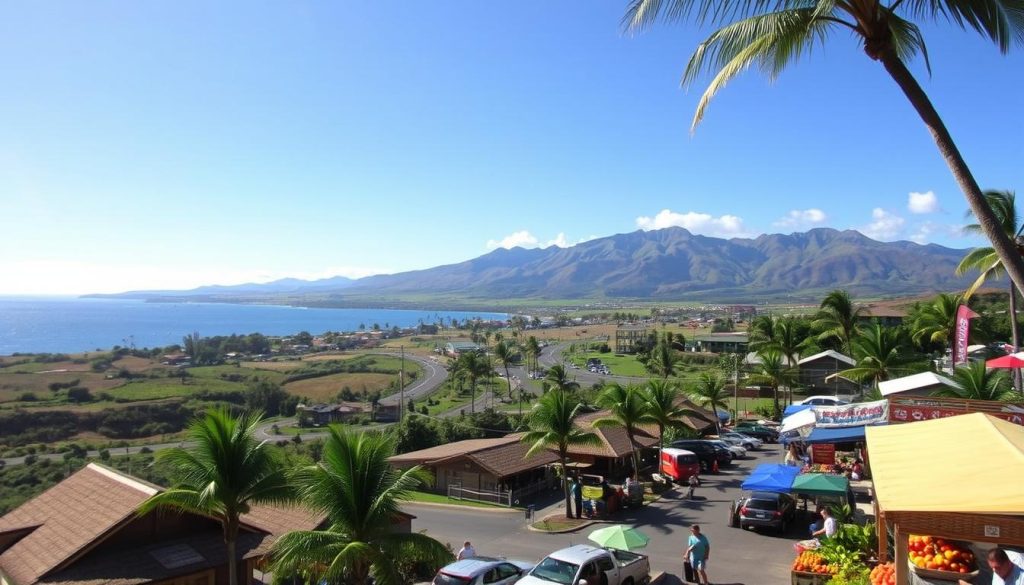
Rentals, Shuttles, and Navigating the Island
Renting a car is a popular choice for travelers who want flexibility. It allows you to explore at your own pace and visit hidden gems. Shuttles are another great option, especially if you’re staying in a resort area. They’re cost-effective and often run on a regular schedule.
For those planning a tour, booking in advance can save you time and money. Many tours include transportation, making it a hassle-free way to see the sights. If you’re visiting in october, you’ll find fewer crowds and more availability.
Local Etiquette and Cultural Respect
Respecting local customs is key to a smooth and enjoyable trip. Always remove your shoes before entering someone’s home—it’s a sign of respect. When visiting sacred sites, dress modestly and follow any posted guidelines.
Here are a few more tips to keep in mind:
- Greet locals with a friendly “aloha” and a smile.
- Ask for permission before taking photos of people or private property.
- Support local businesses by shopping at farmers’ markets and small shops.
By following these tips, you’ll not only have a smoother trip but also leave a positive impression. Whether you’re driving through scenic routes or joining a guided tour, these insights will help you make the most of your adventure.
Seasonal Considerations and Safety Precautions
Staying safe during your trip means being prepared for unexpected weather changes. While hurricanes rarely hit this area, it’s still important to stay informed and take precautions, especially during transitional seasons like April and May.
Staying Safe During Unexpected Weather
Weather can shift quickly, so it’s essential to monitor local forecasts. Pack a small emergency kit with essentials like a flashlight, first aid supplies, and extra water. If you’re planning outdoor activities, check conditions beforehand and have a backup plan in case of sudden changes.
During the whale watching season, from December to March, the ocean can be unpredictable. Always follow safety guidelines provided by tour operators and avoid venturing too close to the water’s edge during high surf warnings.
Tracking Hurricane and Wind Advisories
Hurricane season runs from June to November, but storms are rare. Still, it’s wise to stay updated on advisories. Local news and weather apps are great resources for real-time updates. If a storm is predicted, consider adjusting your travel plans to avoid disruptions.
Here are some practical tips to stay safe:
- Monitor weather alerts regularly, especially during transitional months.
- Have flexible travel plans in case of unexpected conditions.
- Keep important documents and emergency contacts easily accessible.
By staying vigilant and prepared, you can enjoy your trip without worrying about the weather. Being weather-savvy isn’t just about timing your visit—it’s about staying safe and adaptable no matter what nature throws your way.
Budget-Friendly Maui Trip Planning
Planning a trip doesn’t have to break the bank if you know when to go. By choosing the right time of year, you can enjoy significant savings on flights, accommodations, and activities. Shoulder seasons, like spring and fall, are ideal for budget-conscious travelers.
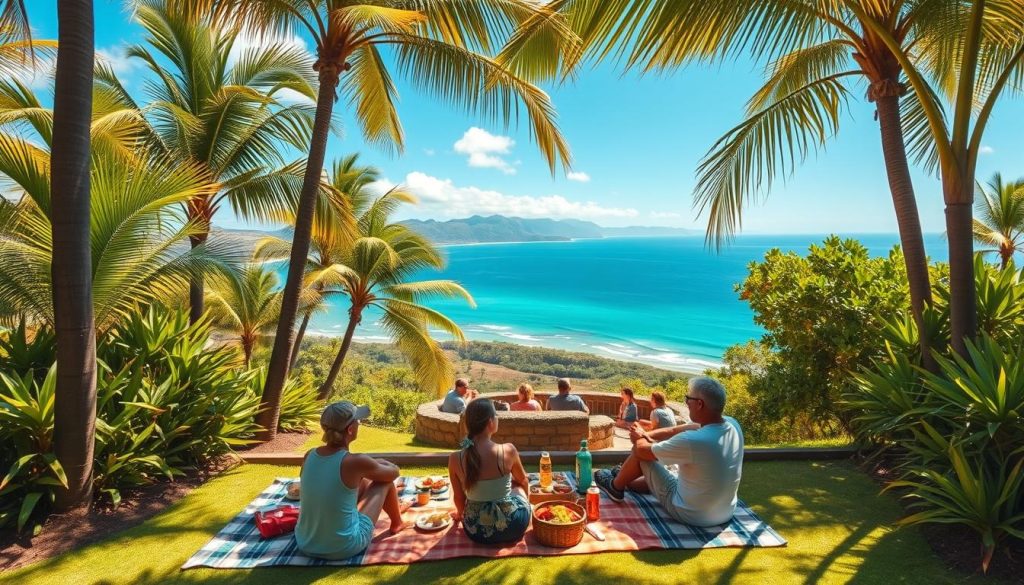
Finding the Best Travel Deals
Traveling during off-peak periods, such as June or September, often means lower prices. Airlines and hotels reduce rates to attract visitors, making it easier to stretch your budget. Booking early can also secure better deals, especially for popular destinations.
Consider using travel apps and websites to compare prices. Many platforms offer discounts for last-minute bookings or package deals. Flexibility with your travel dates can lead to even more savings.
Understanding Seasonal Price Fluctuations
Prices vary depending on the season. Peak travel times, like summer and winter holidays, are more expensive. In contrast, shoulder seasons offer a balance of pleasant weather and affordability.
Here’s a breakdown of seasonal price trends:
| Season | Accommodation Rates | Flight Prices |
|---|---|---|
| Spring (March-May) | Affordable | Lower |
| Summer (June-August) | Expensive | Higher |
| Fall (September-November) | Reduced | Discounted |
By aligning your trip with these trends, you can enjoy a memorable experience without overspending. Whether you’re exploring nature or relaxing on the beach, smart planning ensures a budget-friendly adventure.
Exploring Maui’s Diverse Attractions
Beyond the sandy shores, a world of hidden treasures awaits your discovery. While the beaches are stunning, this destination offers so much more for those willing to explore. From scenic drives to cultural experiences, there’s something for every traveler.
Hidden Gems Beyond the Beaches
One of the most rewarding activities is taking a scenic drive along the volcano routes. These routes offer breathtaking views and a chance to connect with nature. In February, the lush landscapes are especially vibrant, making it an ideal time for exploration.
For a taste of local culture, visit the art galleries and craft markets. These spots showcase the creativity and heritage of the region. You’ll find unique pieces that make perfect souvenirs or gifts.
Don’t miss the chance to indulge in the local food scene. Seasonal produce like lilikoi (passion fruit) and pineapples are often featured in dishes. Restaurants like Seascape Restaurant combine these ingredients into award-winning meals that reflect the island’s flavors.
“Exploring the hidden gems of this destination is like uncovering a treasure chest of experiences.”
Here are some must-visit spots for a well-rounded trip:
- Haleakalā National Park: A 4-mile hike with stunning views.
- Ali’i Kula Lavender Farm: Over 55,000 lavender plants in bloom.
- Garden of Eden Arboretum: 13.5 acres of botanical wonders.
By venturing beyond the beaches, you’ll gain a deeper appreciation for this destination’s rich culture and natural beauty. Whether you’re hiking, dining, or exploring, every activity adds a new layer to your adventure.
When to Visit for Whale Watching and Surfing
Timing your visit for whale watching and surfing can elevate your experience to new heights. Whether you’re a nature enthusiast or an adrenaline seeker, knowing the best times for these activities ensures you make the most of your trip.
Peak Whale Season Insights
Whale watching is a must-do event for any visitor. The season runs from November through May, with peak sightings between mid-January and March. During this time, humpback whales migrate to the area, offering spectacular views.
Guided tours are widely available, and booking early can secure you a spot on a good tour. These excursions often include educational insights about these majestic creatures, making it a memorable experience for all ages.
Ideal Surfing Conditions Throughout the Year
Surfing conditions vary by season, catering to both beginners and experts. Winter months, from November to February, bring larger waves, attracting experienced surfers. The north shores are particularly popular during this time.
In contrast, summer offers calmer waters, perfect for those new to the sport. If you’re planning a surfing event, consider the season that matches your skill level for the best experience.
“Surfing in winter is like dancing with the ocean—challenging but incredibly rewarding.”
Here’s a quick guide to help you plan:
| Activity | Best Time | Conditions |
|---|---|---|
| Whale Watching | November – May | Peak sightings in January – March |
| Surfing | Winter: November – February | Large waves, ideal for experts |
| Surfing | Summer: June – August | Calm waters, great for beginners |
By aligning your visit with these peak times, you can enjoy these activities to the fullest. Whether you’re spotting whales or riding waves, timing is key to a good experience.
Essential Packing and Preparation Tips
Packing smart can make your trip smoother and more enjoyable. With weather that shifts from sunny beaches to cooler highlands, being prepared ensures you’re ready for anything. Here’s how to pack for variable conditions without overloading your suitcase.
What to Bring for Variable Weather
Start with adaptable clothing. Lightweight layers like breathable shirts and a light jacket are perfect for transitioning between warm days and cooler mornings. Don’t forget sun protection—rash guards, wide-brimmed hats, and sunglasses are essential for sunny days.
Rain gear is a must for occasional showers. A compact, waterproof jacket or poncho can save the day during unexpected downpours. For footwear, pack versatile shoes like sandals for the beach and sturdy sneakers for hiking.
- Lightweight, breathable clothing
- Sun protection (hat, sunglasses, sunscreen)
- Compact rain jacket or poncho
- Versatile footwear (sandals and sneakers)
- Reusable water bottle to stay hydrated
Planning for Outdoor Activities
If you’re planning outdoor adventures, pack accordingly. A reusable spork set is perfect for picnics, while a snorkel kit saves on rental costs. For hikes, a lightweight backpack and portable phone charger are lifesavers.
“The right gear turns unpredictable weather into an adventure.”
Here’s a breakdown of what to pack for specific activities:
| Activity | Essentials |
|---|---|
| Beach Days | Rash guard, sunscreen, sandals, beach towel |
| Hiking | Sturdy shoes, backpack, water bottle, snacks |
| Rainy Days | Waterproof jacket, umbrella, quick-dry clothes |
By packing smart, you’ll be ready for any weather shift. Whether you’re lounging on the beach or exploring trails, these tips ensure a stress-free and enjoyable travel experience.
Conclusion
With its stable yet varied climate, this destination offers something for everyone year-round. The temperature remains pleasant, ranging from 75°F to 85°F, making it ideal for outdoor activities. Whether you’re exploring lush landscapes or relaxing on the beach, the weather rarely disappoints.
For nature enthusiasts, the humpback whale season from November to May is a highlight. Peak sightings between January and March provide unforgettable experiences. Guided tours offer insights into these majestic creatures, adding depth to your adventure.
While hurricane season runs from June to November, storms are rare. Staying informed and prepared ensures your trip remains smooth. By planning around these seasonal trends, you can enjoy a memorable and hassle-free vacation.
From outdoor adventures to cultural events, this destination caters to all interests. Armed with insights on temperature trends and minimal hurricane risks, you’re set for an unforgettable journey. Start planning today and make the most of your visit!
The above is subject to change.
Check back often to TRAVEL.COM for the latest travel tips and deals.
Here are some Tours & Sightseeing suggestions that might pique your interests!
